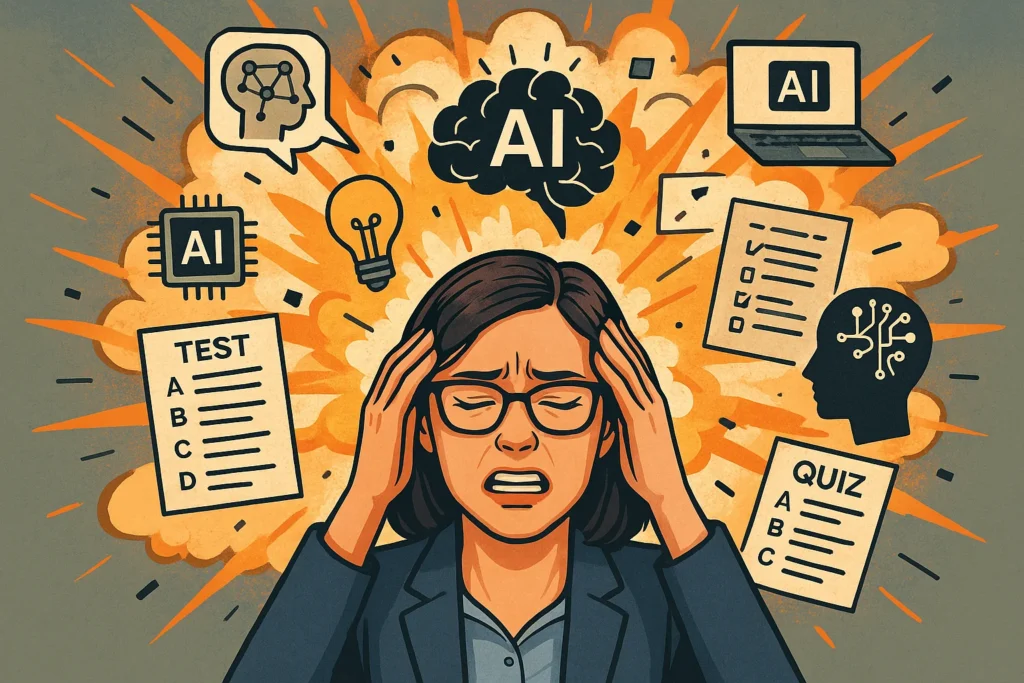The integration of artificial intelligence tools including ChatGPT in the educational sector raised serious issues for the students who carefully completed their projects without using AI tools but found themselves under scrutiny, required to prove their innocence against allegations of taking AI assistance in their assignments. YPulse data shows 69% of college students have used an AI tool for help with homework. But many who haven’t (at least on specific assignments) are now facing repercussions from their professors and universities due to AI-detection tools scanning their writing.
Recently a student named Leigh Burrell, a computer science major student at the University of Houston-Downtown, who was shocked to get zero marks in her assignment which she meticulously completed over a span of two days but was accused of using AI tools in her submission . She has to submit a 15 pages document that denies all the accusations against her, even though she had a thorough editing history on Google Docs to support her work. Such instances shows the excessive pressure placed on students to prove their innocence, even if her grade was subsequently restored. Such atmosphere of keeping every student under suspicion not only hampers their learning experience but also affects students’ mental well-being.
The Rise of AI in Academia
There has been smooth incorporation of artificial intelligence technology in the academics but it is often unregulated. Though some learners take advantage of these tools to improve their learning but sometimes others misuse them, which may result into dishonesty cases in their academic performances. All such situations impelled the educational institutions to use AI-detection software’s in order to maintain the academic integrity.
The Flaws in AI Detection
There are tools for detecting the AI content such as Turnitin, Drillbit, yet their outcomes are not accurate many times. A research report featured in the Indian Express also highlighted that about 6.8 per cent of the time, these technologies incorrectly identified human-written content as AI-generated, which have severe repercussions for the learners, including academic penalties and punishments.
The Need for Balanced Policies
It is expected from the educational institutions to consider the limitations of AI-detection tools and possible impact of false allegations. The institutions must develop clear guidelines on AI usage, investing in more reliable detection methods, and fostering open communication between students and faculty. By adopting these crucial steps, the academic institutions must realign the academic goals by emphasizing the relevance of learning process rather than just the final result.
Conclusion
Looking at the infusion of AI tools and technology in the various facets of education sector, it has become imperative to find a balance between utilizing AI’s advantages and upholding the academic integrity. Institutions must ensure that honest students are protected and that the tools designed to detect misconduct do not become instruments of unwarranted suspicion.
REFERENCES
- https://indianexpress.com/article/technology/artificial-intelligence/a-new-headache-for-honest-students-proving-they-didnt-use-ai-10014950/.
- https://arxiv.org/abs/2403.19148?utm_source=chatgpt.com “GenAI Detection Tools, Adversarial Techniques and Implications for Inclusivity in Higher Education”.
- https://www.theguardian.com/technology/2024/dec/15/i-received-a-first-but-it-felt-tainted-and-undeserved-inside-the-university-ai-cheating crisis?utm_source=chatgpt.com “I received a first but it felt tainted and undeserved’: inside the university AI cheating crisis”.

